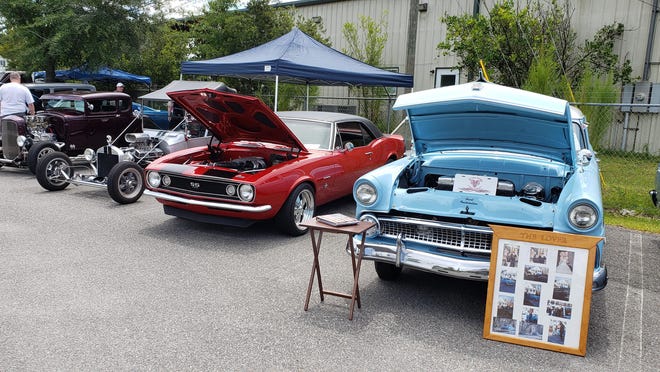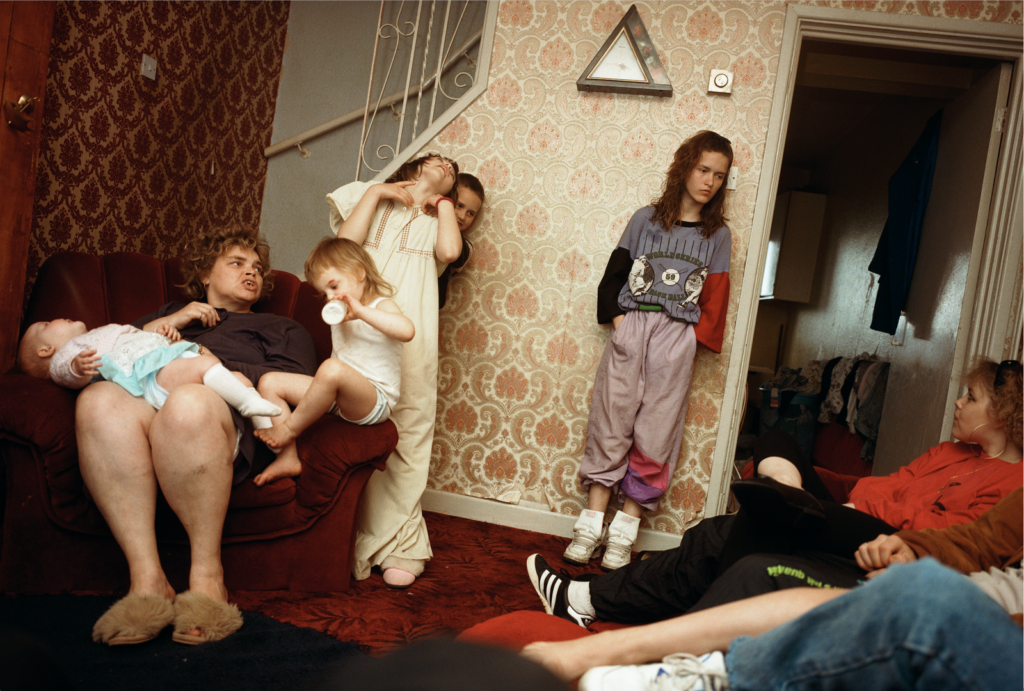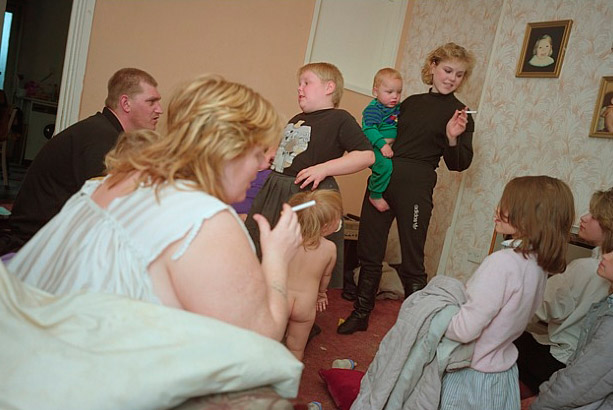Monthly Archives: December 2020
Filters
statement of intent-
I am planning to create a piece of work showing the different “chapters” of a person’s journey through self-hatred, suffering and self-harm into self-love and recovery, specifically relating to an eating disorder, but also with links to general mental health issues and childhood. I will be using myself as the subject of the film, as I have only used other people in my photography in the past and I want to push myself beyond my usual boundaries. I know it will be a difficult subject to explore, considering a lot will be based on my own experience and I’ll be drawing on personal parts of my life, but I think it will also help me and maybe others on the path to recovery. Currently I am planning on having the final outcome be a film, made up of moving images, as I know I can incorporate the different elements of sound and images together in a film. I am also planning to include a voiceover of a text, written by myself, to make the film more personal and emotional. The voiceover will relate to the three “chapters” as they progress, and may also correspond directly with some of the images.
How does this link to the theme of love+rebellion? It explores the idea of self-love and self-acceptance and a journey of rebellion against societal pressure/norms, others’ opinions, as well as rebellion against the self. I am interpreting it in a way that develops a person’s own course to self-love, linking it to the sub-themes of mental health, ED, and personal/psychological recovery.
I have researched in depth three different artists, taken inspiration from their work in different ways, and am planning to incorporate them all into my personal study:
- Sophie Calle: black and white, perspective, cinematic framing of the image/video
- Francesca Woodman: perception of self, self-portrait, body image, absurd/surreal
- Laia Abril: subject of eating disorders and recovery
MOODBOARD-

SC 
SC 
SC 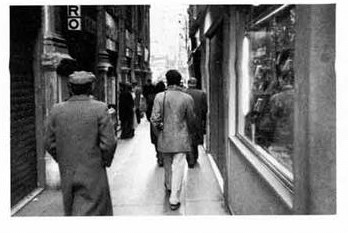
SC 
SC 
FW 
FW 
FW 
FW 
FW 
LA 
LA 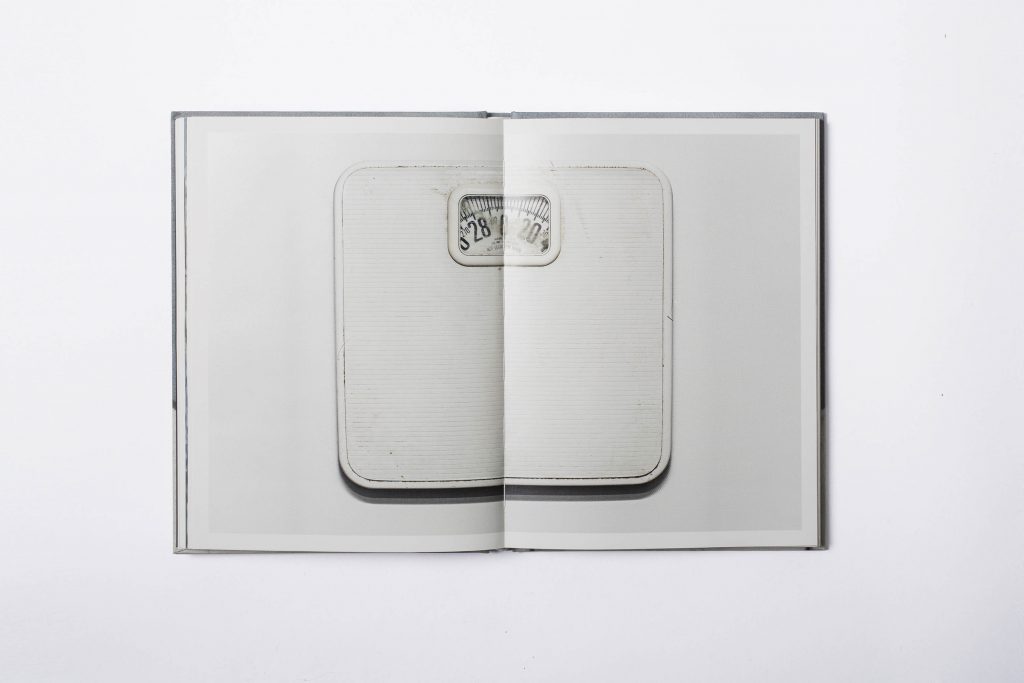
LA
USEFUL LINKS-
https://www.handcraftfilms.com/blog/premiere-pro-black-and-white/embed/#?secret=k7E23C0hzD
art movements and isms: modernism + post-modernism
Modernism and post modernism can be considered two aspects of the same movement, as the second was a direct response of the first. They were a reaction to the age of enlightenment, which was a social, artistic and psychological shift away from religion and God and towards science, reason, and logic. The enlightenment featured two key beliefs: the belief in human nature, and the belief that humanity can progress through scientific methods. Both movements were a rejection of Realism and the Victorian era, and marked a move towards the abstract: truth without reality.
MODERNISM-
Modernism describes a series of cultural movements in the late 19th and 20th century, characterised by a change of thought about the importance of intellect in life. It showed an increase in science, technology and experimentation, and it was an attempt to free humanity in all ways: philosophy, politics, architecture and art as well. This movement and it’s characteristics were mirrored in music, literature and architecture as well.
KEY WORKS-

Claude Monet – Impressionism 
Paul Gauguin – Post Impressionism 
Henri Matisse – Fauvism 
Georges Braque – Cubism 
Raoul Hausmann – Dadaism 
Salvador Dali – Surrealism 
Jackson Pollock – Abstract Expressionism
It was caused by the increase of freedom that artists were experiencing during the end of the 19th century, due to the decline of strictly commissioned portraits. Modernism rejected the most traditional and conservative artistic values in favour of abstraction, experimentation and almost Utopian ideals of what human society should be.
SUB-MOVEMENTS ASSOCIATED (in painting)-
Impressionism: 1860s, featured mainly scenes of everyday life, focused on capturing the light patterns seen in nature using quick brush-strokes and bright colours (often pastels) which was quite a radical technique at this point in time.
Post-Impressionism: 1880s-1905, started as a reaction against the Impressionists’ use of natural colours, these works were brighter and more vibrant, expressing emotions through simplified colours and shapes.
Fauvism: 1900s, featured bold brushstrokes, vibrant and unnatural colours, and a complete break from conventional methods of painting, although this movement didn’t last very long.
Cubism: 1910s-1920s, a revolutionary method of showing reality through abstract and fragmented shapes and lines, wanting to show objects as they really are and not how the artists perceives them to be.
Dadaism: this started form a group, formed in response to the atrocities committed in the First World War, it intended to tear down traditional art rules and create a new form of art that would be recognised around the world; it was political, satirical and often completely nonsensical, as well as being firmly anti-war.
Surrealism: was largely influenced by the Dada group in the wake of the First World War, features strange and often disturbing juxtaposition of dreams, the unconscious, altered reality, and generally unconventional imagery. The term “surrealism” was created by celebrated photographer Andre Breton, who described it like this:
“pure psychic automatism, by which one proposes to express, either verbally, in writing, or by any other manner, the real functioning of thought. Dictation of thought in the absence of all control exercised by reason, outside of all aesthetic and moral preoccupation.”
–Surrealist Manifesto (1924)
Abstract Expressionism: inspired partly by surrealism, the abstract expressionists intended to express emotion through the abstract forms and shapes found in their art. The movement as a whole is defined as:
“the term applied to new forms of abstract art developed by American painters such as Jackson Pollock, Mark Rothko and Willem de Kooning in the 1940s and 1950s. It is often characterised by gestural brush-strokes or mark-making, and the impression of spontaneity”
tate.org.uk
LINKS/SOURCES-
https://www.history.com/topics/art-history/history-of-modernism-and-post-modernism
https://www.tate.org.uk/art/art-terms/s/surrealism
POST MODERNISM-
The term “post-modernism” describes the period after the modernist movement, in the 1960s and 1970s. It can be described as:
“…a dismissal of the rigidity of Modernism in favor of an “anything goes” approach to subject matter, processes and material.”
history.com
Essentially, it was a counter-reaction to the Modernist movement, which attempted to critique the ideas of truth, reality, and an idealistic Utopian human society. While modernism based itself on reason and idealism, post-modernism focused more on scepticism and a distrust of so-called logical reasoning. It questioned the idea that “there are universal certainties or truths”, and often challenged the boundaries of art by mixing various medias and artistic styles together in an anti-authoritarian way.
KEY WORKS-

Andy Warhol 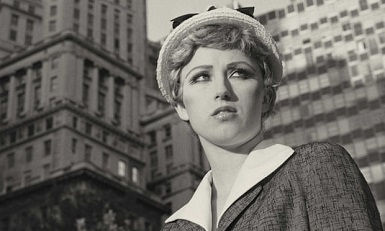
Cindy Sherman 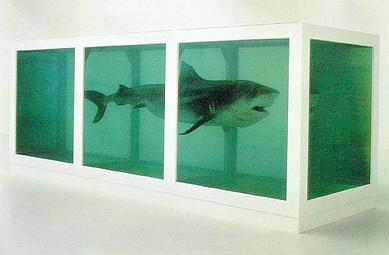
Damien Hirst 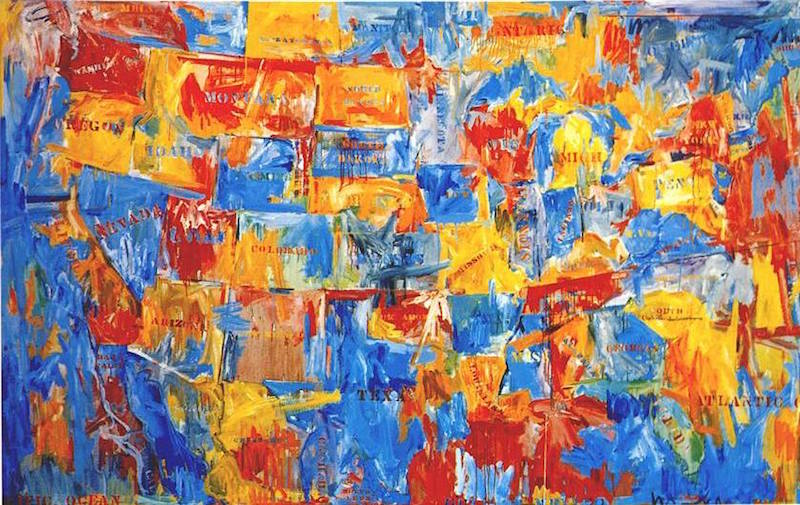
Jasper Johns

Barbara Kruger 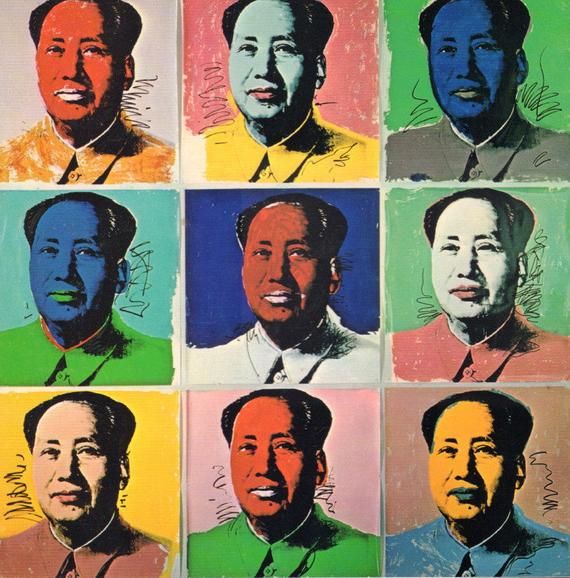
Andy Warhol 
Georg Baselitz 
Roy Lichtenstein
In the beginning of this era, technology began to seep into every part of life; TVs, microchips and computers were dominating society, and the invention of the Internet led to the vast distribution of knowledge all over the globe. This was reflected in the art world, where various artists played on the idea of commercial mass-production devaluing traditional art, and often incorporated themes of the new-found technology within their artwork.
ARTISTS ASSOCIATED-
- Cindy Sherman- American photographer whose work is mainly comprised of self-portraits in various different imagined roles, often commenting on gender stereotypes
- Andy Warhol- leading artist of the Pop-art movement, was famous for working with pop culture icons as well as the most mundane and ordinary objects, became iconic for “blurring the lines between fine art and mainstream aesthetics”
- Jasper Johns- American painter/printmaker, associated with abstract expressionism and often depicts the US flag and other related subjects
- Georg Baselitz- German painter and sculptor, known for his expressive and colourful paintings, many of which are upside down
- Barbara Kruger- conceptual artist well-known for her collages of black and white photographs with bold statements in red over the top
- Roy Lichtenstein- pop artist influenced by the comic book style, was a leading figure in art during the 1960s and whose work was often created through parody
LINKS/SOURCES-
https://www.theartstory.org/definition/postmodernism/history-and-concepts/#nav
Pictorialism vs Straight Photography
PICTORIALISM
Time period: 1880-1920
Pictorialism is an internation style and movement originating in the 1880s and majorly influencing the work of photographers up until 1920s. Pictorialists were concerned with making art out of their images, rather than documenting what the camera would’ve picked up. They did this in an attempt to get society to recognise photography as a form of art.
The main convention of pictorialism was to transform photography into a hand-made process like the other arts. To achieve this they manipulated their images to resemble painting, with many images incorporating female figures as part of their composition. Methods used to alter images include: Scratching the negatives or painting chemicals onto the prints. Some also adjusted the focus of the scene or used a special lens to produce a softer image.
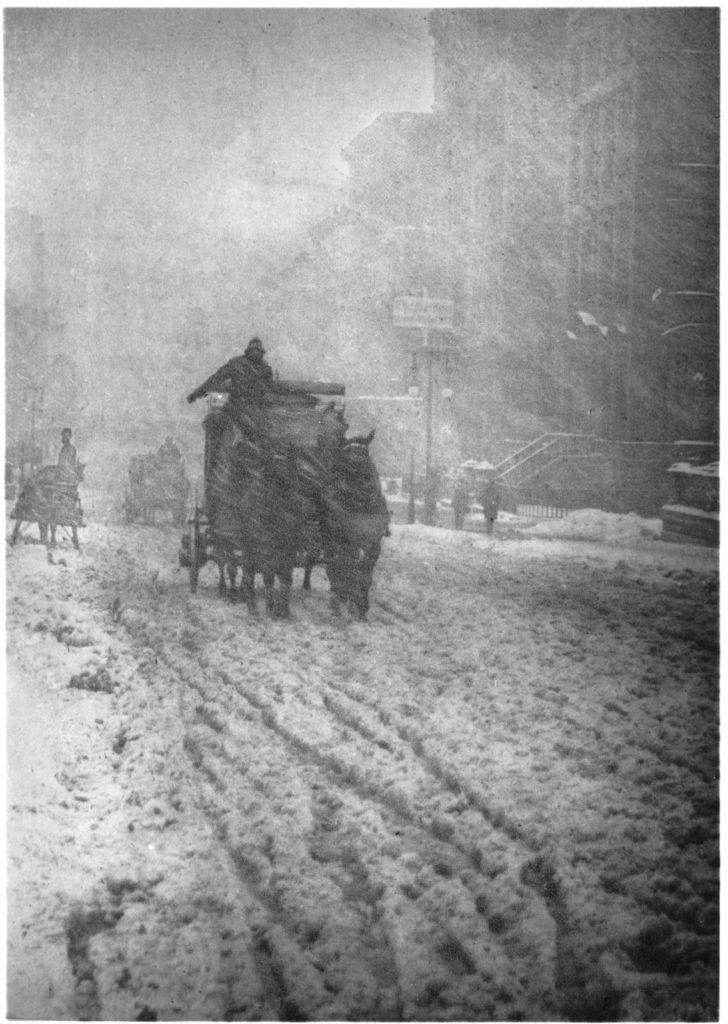
Alfred stieglitz was a primary founder of the movement and was determined over his fifty-year career in making photography an accepted art form.
Stieglitz focused on compositional effects and mastery of tone, often concentrating on natural effects such as snow and steam to create qualities similar to those of the Impressionists. His peers however, often focused on chemical processing of the images after their production.

REALISM / STRAIGHT PHOTOGRAPHY
Time period: 1915-1930s
This particular approach was created in response to pictorialism. The style rejected the soft focus and painterly essence of pictorialism and encouraging candid images of modern life. Photographers, such as Paul Strand, took advantage of the fact that the camera could capture shapes and forms sharply and in focus. They did not manipulate their images and faced reality head-on by having their images in full focus. Many focused on abstract for but some common characteristics of realist images include clean lines, sharp focus and repetition of form.
To acheive their desired outcome, realist photographers made sure their images represented the real world as accurately as possible, taking the image only once it was in sharp focus. Their final image is untouched; It isn’t manipulated through chemical processes and is an exact replica to what the photographer would have seen through the viewfinder.
Brett Weston
Brett Weston was the son of Edward Weston, who was renowned for his intuitive and sophisticated sense of abstraction. He engaged in ‘layered space’, an artistic style more often seen among the abstract expressionists and other modern painters.
During his career, Brett had even influenced his father. He had introduced semigloss gelatin silver paper into the Weston studio, a material fundamental to the sharp focus demanded by the new style with which Edward had been experimenting.
ESSAY PLANNING
Planning – Archive images
SHOOT 1 – 1st series of Archive Footage
CONCEPT: For this first series of archive footage I am going to look through the photo albums from the Jersey Mini Club. Each year there is an album of photos from events and shows that the club went to. My grandad is in a lot of those albums so I am going to look for images of him with trophies, with his car and with his friends.
WHEN/WHERE: On the Mini Club Jersey Website.
HOW/EQUIPMENT: Access to a laptop and the internet
IDEAS/MOODBOARD:
SHOOT 2 – The garage and memories
CONCEPT: Take some images of his garage where he kept his mini highlighting details and his tools. Also the spare room where there are trophies and stuff he won. I plan to get eide establishing shots as well as ‘macro’ shots of individual details which have significance.
WHEN/WHERE: In the garage at my Nan’s house as this is where he kept the mini.
HOW/EQUIPMENT: I will set up my SL60W light with a softbox because is is quite dark in the garage. I will put it off to the side of the work bench and point it down onto the desk as this will cause some nice shadows. I will use my Sony a73 with a 70-200 or 50mm 1.8 for the details to isolate the subjects and a 35mm for widershots.
IDEAS/MOODBOARD:
SHOOT 3 – My Nan at the house
CONCEPT: I want to capture the details around the house where he lived, and my Nan who still lives there. I plan to get both candid and environmental portraits of my nan in her house, reading the paper, watching TV. Also the chair where my Grandad use to sit.
WHEN/WHERE: In my Nan’s house during the day so I can use natural light in the house to take the photos. When covid rules relax more.
HOW/EQUIPMENT: I am going to use my Sony A73 with my 35mm lens to get the wider interior shots of the house and of my Nan. For the details I will use either the 50mm or the 70-200mm zoom lens to really isolate the the details I am capturing. I want to use window light for most the interior shots of the house and not use the ceiling lights as they are a different colour and make the photos look really dingy and colour contrast with the cool window light.
IDEAS/MOODBOARD:
SHOOT 4 – Me and my Mini
CONCEPT: At the end of November I bought my own mini. I want to get some photo’s, some taken by a friends and some self portraits. I am looking to get both candid and environmental portraits of me working on the car and driving it. For environmental images I want some posed shots of me in my grandad’s old mini club jumpers sitting on the car or next to it. I also have an old steering wheel which was my grandad’s so i could also be holding that in the photos.
WHEN/WHERE: Location 1. – In the garage working on the car. Location 2. –The 5 mile road, L’etack, Le Pulant driving the car and posing next to the car.
HOW/EQUIPMENT: I will do a mixture of self portraits and some photos taken by James Rouault. I will use my Sony a73 on a tripod with a 24-70 for the self portraits as it is makes things easier to take the photos myself.
IDEAS/MOODBOARD:
nick waplington
waplington tends to take images with a film camera as he says he has “always felt more in control with film, which he says handles the mixed light better”. in waplingtons project, living room, he photographed the daily lives of two working class families, who lived on a council estate in Nottingham, England, over four years. he did this to “expose the viewer to every intimate moment of domesticity and laying bare the private sanctity of home.”. waplington grew up in the UK during the post-punk era, and with his parents regularly traveling he spent lots of time on his own. waplington stated in an article that, “big influence on me. I realise now that I have a teenage child that we had a lot of freedom back then, which kids don’t have now. At the age of 12 I was just out in London. I was up all hours doing whatever I wanted, which was perfectly acceptable so long as I went to school. I think that the music scene, the politics and the world that went with it has had a life-long effect on people of my age, especially on what they do and how they produce things.” waplington is inspired by the world around him, and creates his work following a detailed process. his process includes revisiting previous work, and allowing those projects to spark new but almost similar projects with the same intentions. when talking about research in an interview waplington stated, “I’m always trying to re-evaluate and change what I do so that I’m outside of my comfort zone.” waplington now focuses on documenting his own family’ lives.
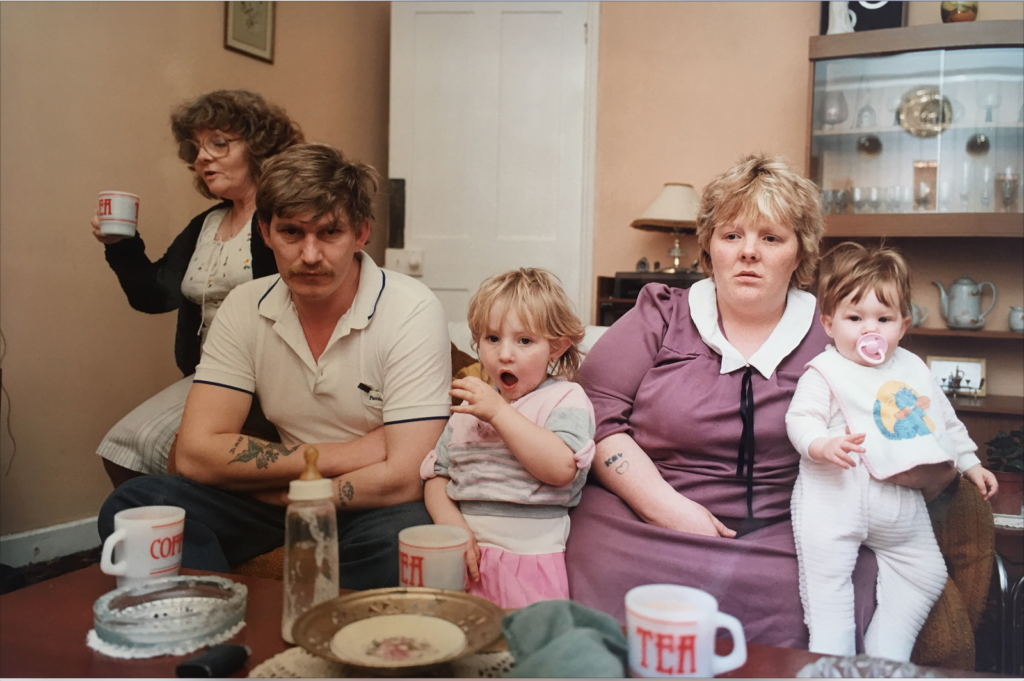
The lighting in the photograph is completely natural, and links to how Waplington wanted to document normal life, and not fake ones. The colours are fairly muted, with accents of bright colours, but mostly within the clothing of the individuals pictured. Did Waplington do this to show how ordinary these people are? The composition of this image is strong, with the little girl being the focal point of the image, as she is surrounded by 2 figures on each side. Do these figures have relation to her, or are they just friends to the family? Nick Waplington creates a question with this photograph and that is who is this family, what have they been through and how to the relate to him? Personally I think this image says a lot about Waplington, himself, as growing up he spent lots of time alone, with his parents being away. This photograph contrasts with the type of upbringing that Waplington had, as he was not surrounded constantly around family. The families he photographed thrive off family interactions, they live for it. Family gatherings are often, and Waplington wanted to capture them to maybe almost reflect on what he would have liked to have, and what he wants for his own family.
| what? | candid photographs/videos during the christmas period |
| who? | family |
| where? | at home, out on walks |
| how? | setting my camera on a tripod and using a timer handheld (videos) |
| why? | to gain natural photos/videos of my family during a time when family means the most |
links
STORY: What is your story?Describe in:
3 Words:
Love and nature.
A Sentence:
The link between the human body and features of nature represent the simple beauty and self love created by a person.
A Paragraph:
Looking at the idea of self love I will focus on certain features of the body and encapsulate the beauty in each part focussing on the simple things. I will then link this or contrast with a piece of nature showing the natural beauty, building on these views to create a whole picture representing the journey of learning to love your individual features enabling a person to love there whole self naturally with nature connected. The views will develop as the parts of the body come together to create a whole person at one with themselves and nature. I am going to use pieces of nature that have meaning to each individual being photographed creating sentimental value to the nature being used.
photoshoot plan 2
| what? | self portraits and portraits doing our makeup and picking out outfits |
| who? | myself and my sister |
| where? | in our bedrooms and in the bathroom |
| how? | using my camera on a tripod |
| why? | to show how we experiment with makeup and fashion to express ourselves environmental portraits |

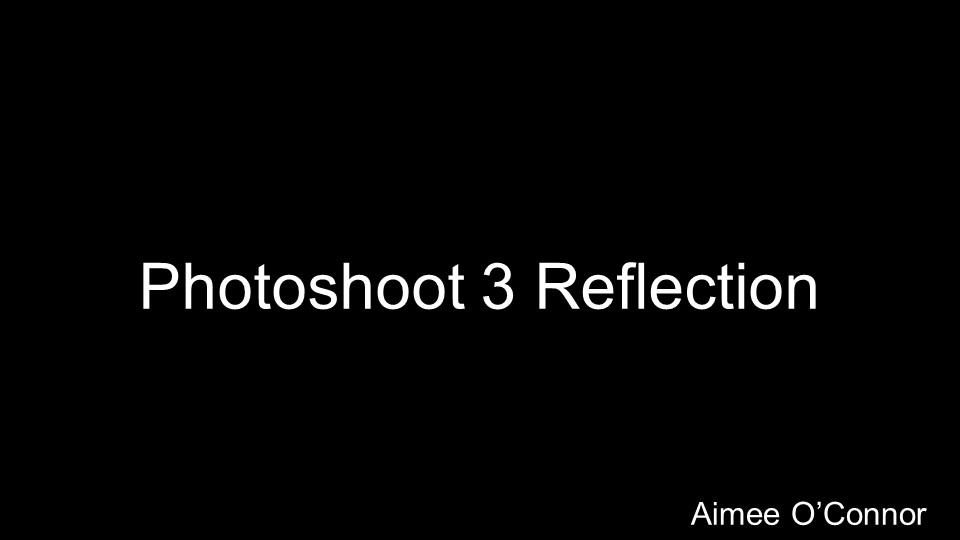

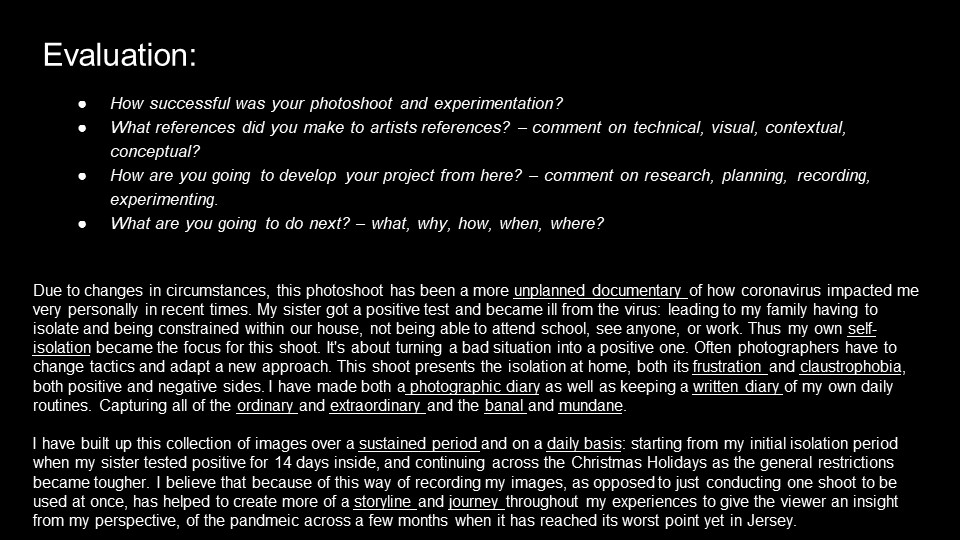


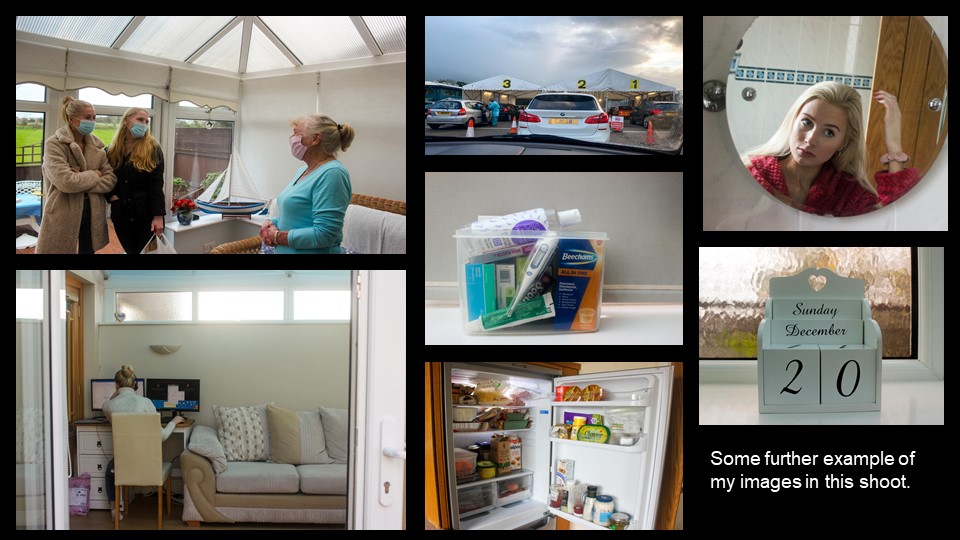
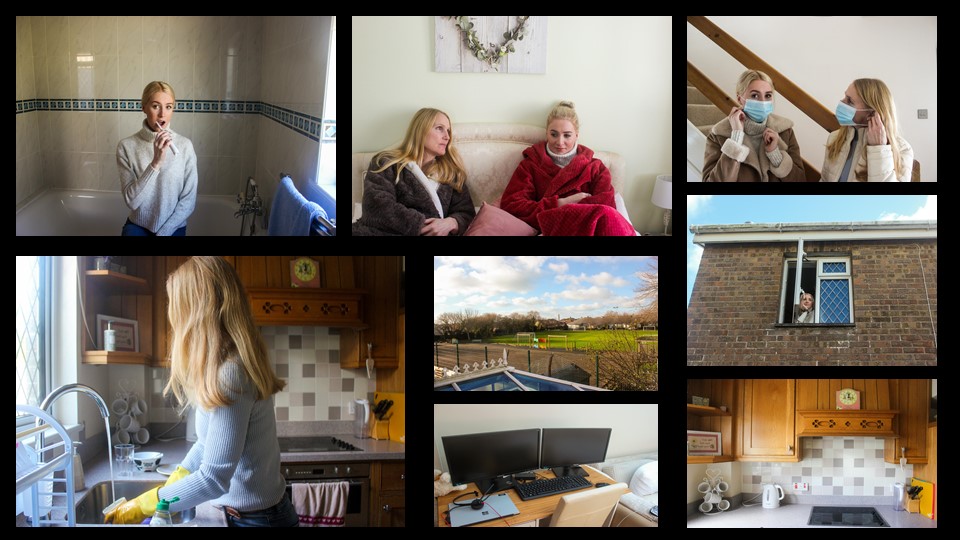

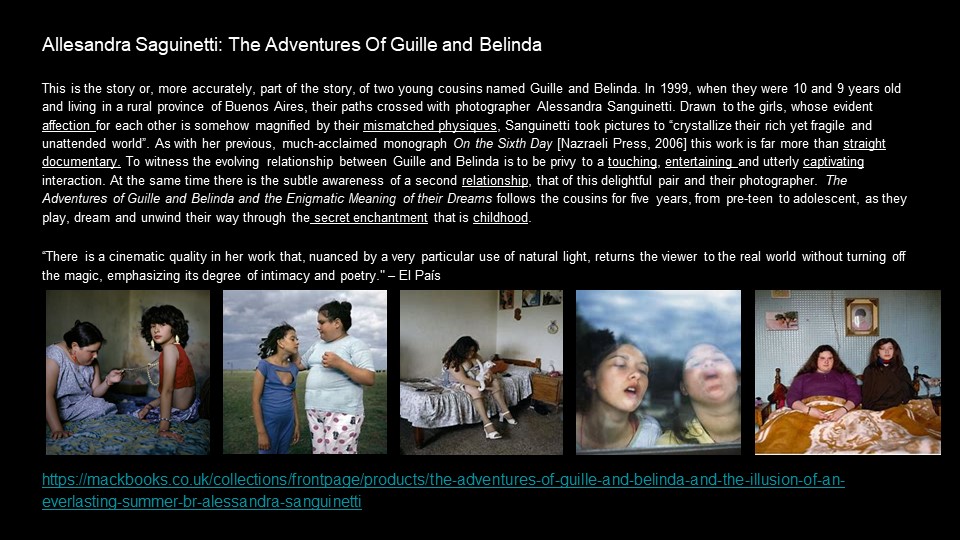
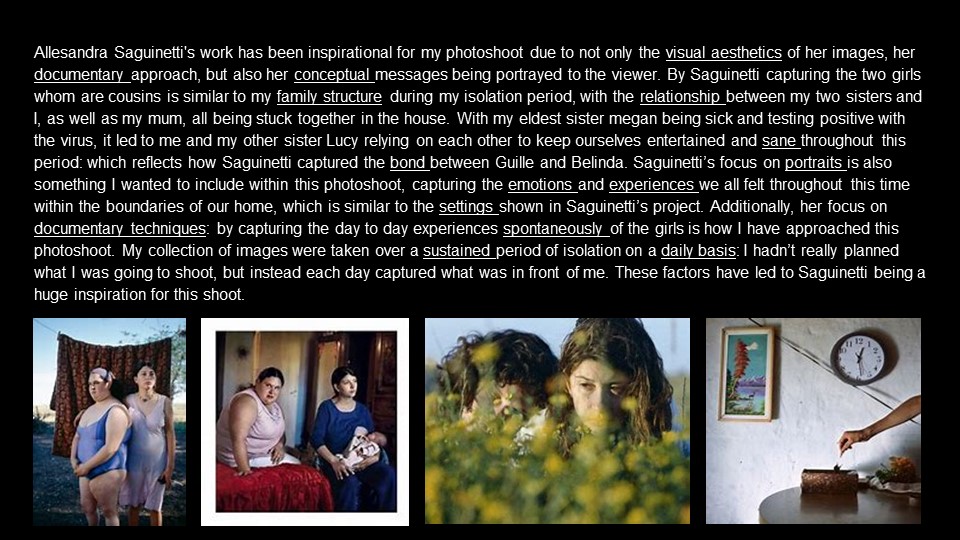











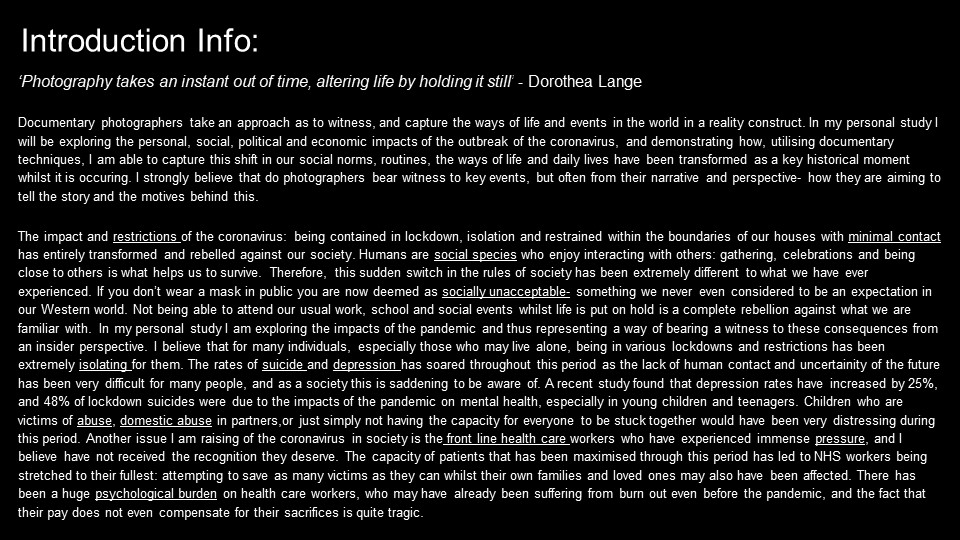



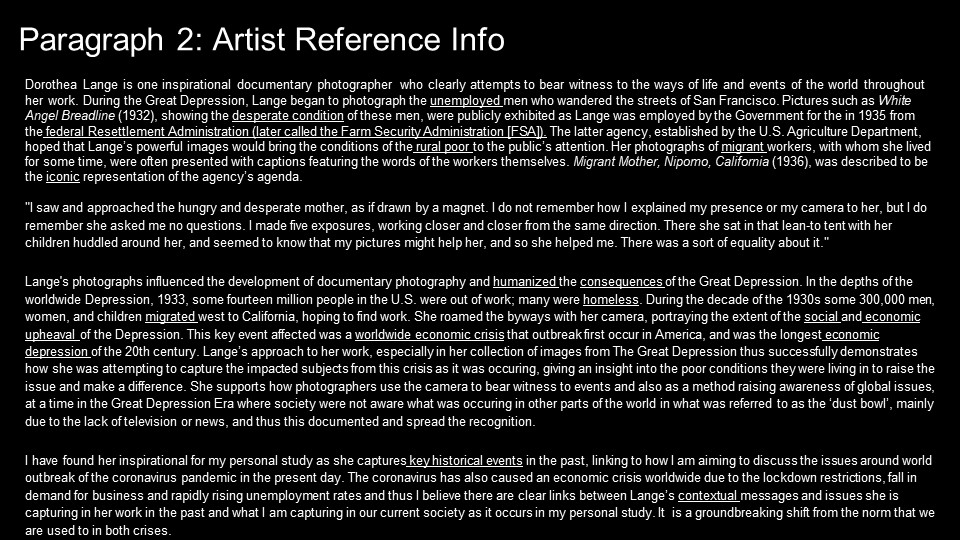






/stories/2012/08/Cruiseins-concours-shows1.jpg)
